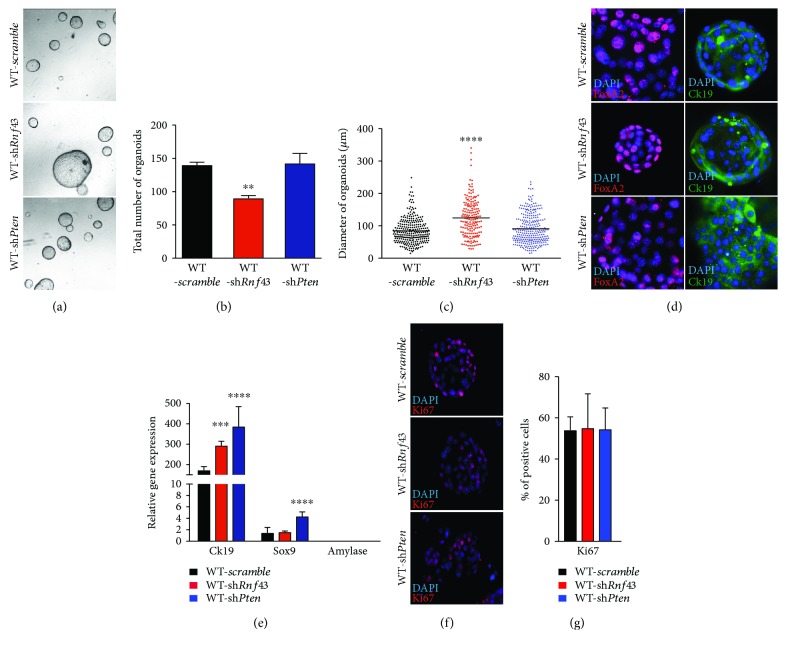Figure 2.
Pten and Rnf43 loss supports ductal features in wild-type organoid cultures. (a) Representative pictures of organoids with shRNA knockdown of Pten (WT-shPten) or Rnf43 (WT-shRnf43) compared to WT scramble control after six days of culture (40x magnification). (b) Significantly decreased organoid growth rate after knockdown of Rnf43 (p = 0.0071). (c) RNF43 deficiency significantly increases the diameter of ductal organoids compared to WT scramble (p ≤ 0.0001). (d) Immunofluorescence stainings of shRNA-mediated knockdown Pten and Rnf43 organoids reveal the expression of FOXA2 and CK19 (400x magnification). (e) The knockdown of Pten (WT-shPten blue bar) significantly increases the expression of CK19 (p ≤ 0.0001) and SOX9 (p ≤ 0.0001) and for CK19 (p = 0.001) in case of Rnf43 (WT-shRnf43 red bar) knockdown compared to WT scramble (black bar). (f) Ki-67 immunostaining analyses of shRNA-mediated knockdown of Rnf43 and Pten in WT organoids (400x magnification). (g) Immunohistochemistry revealed no differences in the percentage of Ki-67-positive cells in WT-shPten (blue bar) or WT-shRnf43 (red bar) compared to the scramble control (black bar). For statistical analysis, two-tailed Student's t-test was used. p < 0.05 was considered to be statistically significant. Error bars represent the standard errors of the mean.

